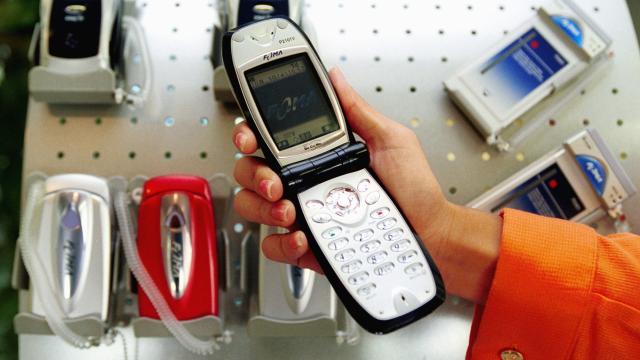Smartphones have made plenty of tech obsolete. Yet every time I get a buzz for a text, I can’t help but feel a deep yearning for the old glory days of T9 texting.
Before T9, or “text on 9 keys,” texting was godawful. Each of your phone’s nine number keys substituted for three or four letters, and to get to each one you had to press the same key multiple times. Too fast, and you’d blaze past the letter you were intending. Too slow and it’d assume you meant a different letter and you’d have to backspace and try all over again.
Most times, it was easier to just call. Longer conversations with friends were for when you parked your butt in front of a computer and logged onto forums, chatrooms, or some sort of instant messenger. And while I miss that strict separation between phone and computer, having to call or email for everything was a pain.
That’s why the first time I got a T9-capable mobile phone, it blew my mind. It was a boring silver Motorola clamshell—the cheapest one at the Verizon store my dad was willing to get me—but I was finally able to shoot off quick messages like “Where u at” and “Running late” without taking 15 whole minutes to do so.
Instead of having to tap multiple times to type one letter, I could hit a single key and trust an algorithm to predict what word I was trying to write. Sure, there were a few snags at first—especially with my friends’ love of early 2000’s slang—but over time my phone was able to learn which words I used most.
Technically, while T9 debuted in 1995, texting didn’t take off right away. It still had to wait for network carriers to catch up. My first mobile phone was a craptastic Panasonic with a monochrome screen the size of my thumb—you know like the ones on those old StarTAC phones. Even if I wanted to text on that thing, I don’t think I could have.
It wasn’t until 1999 that you could text across networks, and in 2000, Americans were only sending about 35 texts per month. By the time I hit the end of middle school and started high school in 2002, that number skyrocketed to 250 billion worldwide. Smartphones weren’t a thing until 2007, and the kids in my schools weren’t rich enough to afford full-keyboard Blackberries.
The cool kids were all T9-texting on their reported teens were sending and receiving 3,339 texts a month.
But back to me getting my first T9-capable phone in summer 2002. Could I write a four page essay telling that one back-stabbing ‘friend’ who told my crush I hated him exactly where she could stuff it? Technically yes, but even with T9 that was an ambitious endeavour and likely to be riddled with typos.
If you don’t believe me, or you’re too young to remember, you can try out this T9 emulator.
Here’s what I miss about T9’s limitations. It was easy to send run-of-the-mill texts like, “When r u heading home?” or “Can you pick up some water on your way home?” I could save my minutes for real conversations and not three-second housekeeping calls.
I was also spared the embarrassment of multi-paragraph text arguments. Those were reserved for in-person blow outs, emails, or instant messengers. At least there, the extra effort and time delay gave me a moment to parse my thoughts.
I was still connected, but more importantly, I wasn’t distracted. When I was out with friends, my mind wasn’t chained to my computer at home. Carrying on text conversations with people who weren’t present was way too obvious—there was none of that slip the phone under the table, keep your eyes up, and surreptitiously text other people thing that so many of my friends do these days. T9 was convenient, but it still took a minute to type out a coherent sentence.
Recently, I decided to rewatch the first three seasons of Veronica Mars with my partner. Set in the early 2000’s this was a typical CW—or back then, WB—show about teens with a dash of murder.
In each episode, the characters’ crappy phones played a major part—just in a different way than you might expect if the show had been made today. People sent texts, but they were short and to the point. The majority of the drama happened in real-life conversations, or occasionally over email. Phones were a useful tool, but life and relationships didn’t revolve around them. I credit T9 with that.
Of course, it’s hard not to want more of a good thing and T9 was clearly a gateway drug. Once it became clear what the possibility of instantaneous communication via texting could do, T9’s days were numbered—starting with physical keyboards on phones.
Even Veronica upgraded to a T-Mobile Sidekick II in later seasons. Smartphones were the final nail in T9’s coffin and today, it’s useless for everyone except stubborn holdouts clinging to their flip phones.
I held out for as long as I possibly could—the first iPhone was announced in 2007, but I didn’t give up T9 until early 2012. A big part of that was because I didn’t want to get sucked into that texting life.
It annoyed all my friends, but truthfully, I liked having a viable excuse to be as communicative or uncommunicative as I wanted. T9 gave me a sense of control that I feel I’ve since lost—even if I love how texting has evolved to include emojis, reaction gifs, and memes.
Sure, I could regain a semblance of control if I had more discipline. Realistically? These days, being unreachable is sometimes borderline irresponsible. When that thought stresses me out, I look back and miss the level of measured connectivity that T9 provided.
